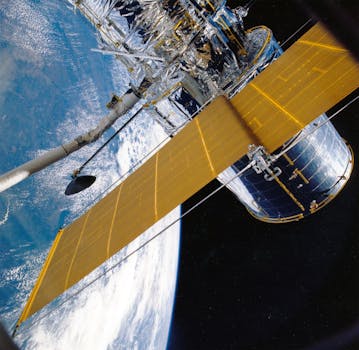GEO Satellites: Unlocking the Power of Geostationary Orbit
GEO satellites, or geostationary satellites, are a type of satellite that orbits the Earth at an altitude of approximately 36,000 kilometers, allowing them to remain stationary above a fixed point on the equator. This unique characteristic makes GEO satellites an essential part of modern satellite technology, with a wide range of applications and benefits.
GEO satellites are used for a variety of purposes, including telecommunications, weather forecasting, and navigation. They are also used for military and scientific research, as well as for broadcasting and earth observation. The geostationary orbit allows GEO satellites to provide continuous coverage of a specific region, making them ideal for applications that require real-time data transmission and reception.
History of GEO Satellites
The concept of GEO satellites was first proposed by science fiction writer Arthur C. Clarke in 1945. However, it wasn’t until the 1960s that the first GEO satellite, Syncom 2, was launched. Since then, the technology has evolved significantly, with advancements in materials, propulsion systems, and communication equipment. Today, there are hundreds of GEO satellites in orbit, providing a wide range of services and applications.
The development of GEO satellites has also led to the creation of new industries and job opportunities. The satellite industry is a significant contributor to the global economy, with an estimated value of over $300 billion. The industry also supports a wide range of careers, from engineering and manufacturing to operations and maintenance.
Applications of GEO Satellites
GEO satellites have a wide range of applications, including telecommunications, weather forecasting, and navigation. They are also used for military and scientific research, as well as for broadcasting and earth observation. The geostationary orbit allows GEO satellites to provide continuous coverage of a specific region, making them ideal for applications that require real-time data transmission and reception.
One of the most significant applications of GEO satellites is in telecommunications. GEO satellites are used to provide internet and telephone services to remote and underserved areas, where traditional infrastructure is lacking. They are also used to provide backup services in case of natural disasters or other emergencies. The use of GEO satellites in telecommunications has revolutionized the way we communicate, enabling global connectivity and access to information.
Benefits of GEO Satellites
GEO satellites offer a wide range of benefits, including global coverage, real-time data transmission, and high-bandwidth capacity. They are also relatively low-cost compared to other types of satellites, making them an attractive option for a wide range of applications. Additionally, GEO satellites are highly reliable, with a lifespan of up to 15 years or more.
The use of GEO satellites also has a number of social and economic benefits. They provide access to information and communication services, which are essential for economic development and social inclusion. GEO satellites also support a wide range of industries, including finance, healthcare, and education. The use of GEO satellites has also enabled the creation of new industries and job opportunities, contributing to economic growth and development.
Challenges and Limitations of GEO Satellites
Despite the many benefits of GEO satellites, there are also several challenges and limitations to their use. One of the main challenges is the high cost of launching and maintaining a GEO satellite, which can be prohibitively expensive for some organizations. Additionally, the geostationary orbit is becoming increasingly congested, which can lead to interference and other technical issues.
Another challenge is the risk of space debris, which can pose a significant threat to the operation of GEO satellites. Space debris can cause collisions and other damage, which can result in the loss of satellite functionality and even complete failure. The risk of space debris is a major concern for the satellite industry, and efforts are being made to mitigate this risk through the development of new technologies and regulations.
